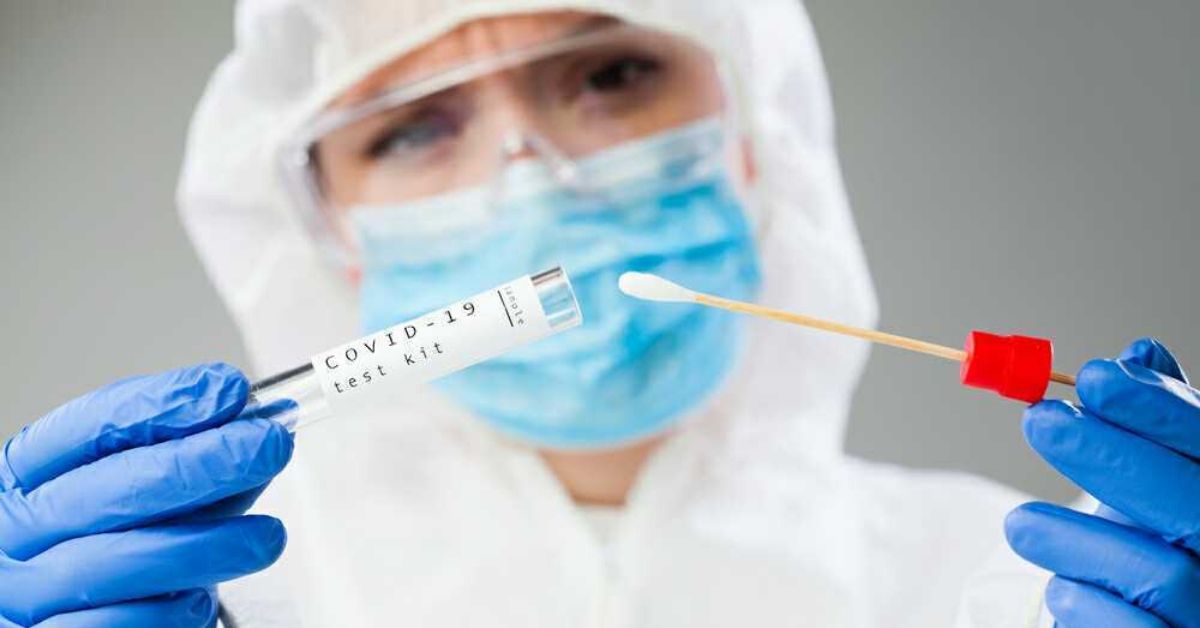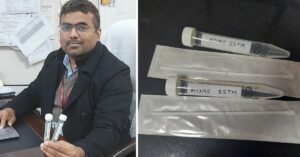Omicron Symptoms Are Different From Delta; Here’s Why You Need a Specific Test
Dr Sushila Kataria from Medanta, Gurugram, explains how the Delta and Omicron variants of the Coronavirus differ, and how identifying the right strain early can benefit the treatment protocol.

As of 5 January, India has reported a total of 58,097 new COVID-19 in a single day. In the wake of a steady incline in case load, states have started imposing various curfews to curb the spread of the virus.
On 26 November 2021, the World Health Organization (WHO) designated the newly identified SARS-CoV-2 lineage B.1.1.529 as a Variant of Concern (VOC). This newly identified strain is being referred to as Omicron.
The Better India caught up with Dr Sushila Kataria, senior director, Internal Medicine, Medanta Gurugram to understand the differences between the two strains and the importance of identifying the right strain early on.
What is the difference between Omicron and Delta strain?
According to a report in India Today, gene sequencing of the Omicron variant showed that it had more mutations than the Delta variant of COVID-19. Researchers found 43 AA mutations in the spike proteins of the Omicron variant, as compared to 18 found in Delta, the report added.
According to Claudia Alteri – professor of clinical microbiology at Milan State University and researcher at Bambino Gesu – the high number of mutations does not automatically mean that these variations are more dangerous. Instead, this indicates that the virus has further adapted to the human species by generating another variant.
As of now, symptoms of Omicron include a disproportionate amount of fatigue, headache and body ache, accompanied by dry cough, a stuffy or runny nose, sore throat and frequent sneezing. Patients may also experience a low grade fever, and in some young adults and children, temperatures can spike up to 103’F.
Dr Kataria says, “So far, we have not seen cases where the oxygen saturation level has dropped or where patients have lost their sense of smell and taste. Additionally, even the lung involvement that we are noticing is negligible. CT scans are also looking good.”

The tool for diagnosis continues to be the RT-PCR test, which currently detects all strains of the COVID-19 virus. Dr Kataria says, “Then there are specific mutation tests which can detect whether the strain is Beta, Delta or Omicron. These tests are being conducted at the hospital and the results usually come within a few hours of the sample being collected and tested.”
She adds that the gold standard of this test continues to be the sequencing test.
On why it’s important to ascertain the strain of COVID-19, Dr Kataria notes, “One reason is purely from an academic perspective – to understand which strain is going to be dominant to help us stay prepared.” She adds that the treatment protocol will also depend on what strain of COVID-19 a patient has contracted.
“While high-risk patients who have the Delta variant could benefit from the monoclonal antibody treatment, which is known to reduce the need for hospitalisation and even death, patients with Omicron are unlikely to benefit from this line of treatment,” she says.
From the experience of treating patients with Omicron since 4 November 2021, Dr Kataria says, “We are seeing such patients react very well to antiviral drugs and therefore understanding the strain is important to treatment.”

As per reports in Business Standard, on 30 December 2021, the Indian Council of Medical Research (ICMR) approved a kit developed by Tata Medical and Diagnostics that will be used to detect Omicron. According to the official statement issued by the company, Ravi Vasanthapuram, head of the research and development of TATA MD, said, “This kit can detect the Omicron variant as well as other variants of SARS-CoV2 reported so far. Currently, Omicron patients are detected only after genome sequencing. But this test can help eliminate that step and detection can be done during the testing.”
Details about this kit:
· By eliminating the need to send the sample for sequencing, one can save time and prescribe medicines according to the strain detected.
· The test run time of this kit is 85 minutes.
· The time taken for sample collection and RNA extraction is 130 minutes.
· The company has also applied for a patent for this technology.
· While the cost of this kit has not been mentioned, it is likely to cost around what an RT-PCR test currently costs.
· These kits will be manufactured in India for both domestic and international markets.
(Edited by Divya Sethu)
This story made me
- 97
- 121
- 89
- 167
Tell Us More
We bring stories straight from the heart of India, to inspire millions and create a wave of impact. Our positive movement is growing bigger everyday, and we would love for you to join it.
Please contribute whatever you can, every little penny helps our team in bringing you more stories that support dreams and spread hope.



















